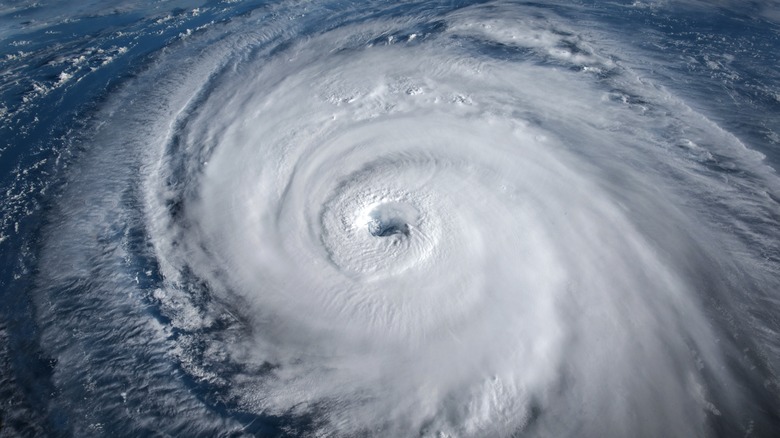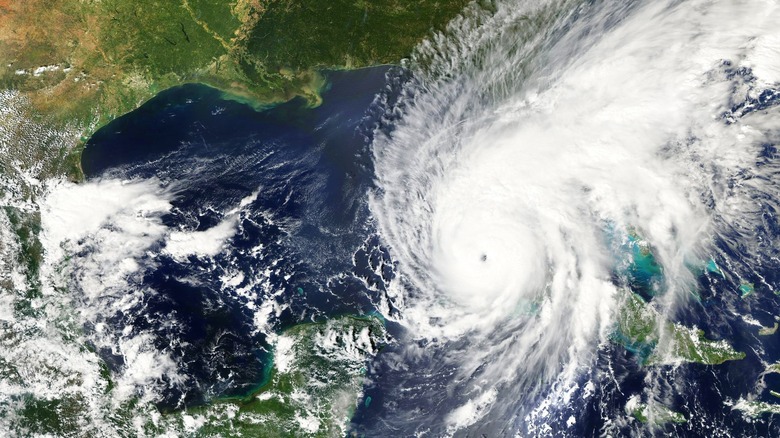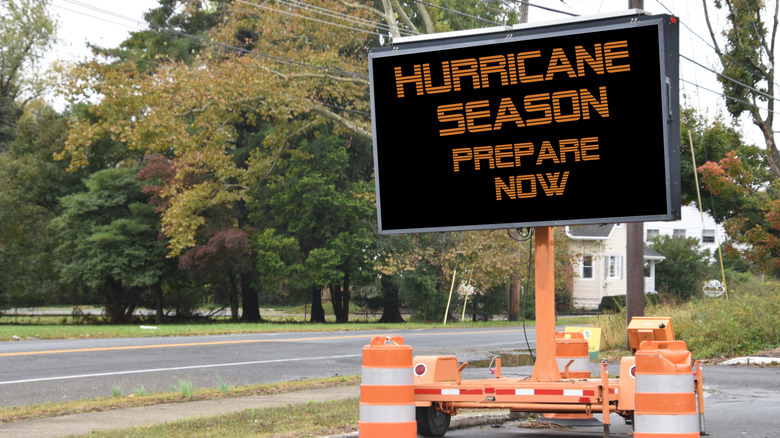Why You Should Always Close Your Interior Doors Before A Hurricane
Hurricane season comes along each year as the weather heats up and the summer begins to set in. Atlantic hurricane season lasts from the beginning of June all the way to the end of November, according to NOAA. During this time, it's common for the Gulf and Atlantic Coastal regions to see five or six worrisome storms pass through. Many times, these storms arrive as tropical systems or low-grade hurricanes and don't pose grave danger for people in these areas. However, hurricane-force winds can rise to a terrifying level and bring with them an immense trail of destruction, chaos, and death. Some of the worst hurricanes that have hit the United States in the last few years have decimated power grids, annihilated city and town infrastructure, and killed thousands of people.
Homeowners in areas that are prone to hurricanes have developed a kind of de facto checklist to prepare for the arrival of each new storm. Often, this involves gathering supplies, securing windows, and bringing outdoor furniture into the home. But one thing that homeowners should always do as they prepare their home to weather a hurricane is a more subtle practice. Closing your interior doors is an essential step to keeping your property safe as a hurricane makes its way toward your community. The reason might just surprise you.
Closing doors regulates interior pressure
Closing your interior doors might sound like a gimmicky step when preparing your home for an oncoming storm. After all, your windows are likely rated for severe wind activity and, therefore, your home should remain intact in all but the most extreme circumstances (via Pella). However, this practice involves the regulation of subtle pressure changes within the home. A typical roof is built with a slight overhang that extends beyond the edge of your exterior walls. Because of this, hurricane-force winds exert an enormous amount of upward pressure on the roof. A well-maintained roof should remain in place under most circumstances. But if there is a breach into your home through a window or other opening, then the pressure inside the home can contribute to the structural failure of the roof. By leaving your doors open, you create a large and dispersed space that acts as one pressure point on an already stressed roof (via Insurance Institute for Business & Home Safety).
Closing all of your interior doors segments each of the rooms away from one another, creating an air gapping system that won't allow for pressure to build throughout your home, which can lead to a lifting and the resulting collapse of your home's roof. This is a simple step, but one that homeowners can use to great effect when preparing their homes for maximum protection.
Additional hurricane preparations for increased property protection
It's important to note that there are no guarantees when it comes to hurricane preparations. Hurricanes often take dramatic turns at the last minute, they can stall in the warm gulf waters and gain strength before making landfall, or they can suddenly die down and pose a much weaker threat to life and property. The uncertainty makes them all the more dangerous, and rather than expecting a hurricane to pass you by altogether, you should always anticipate the worst (via Houma Today).
Typical preparations include boarding up or taping windows to prevent breakage, sandbagging doors and other areas of the home in locations that may be prone to flooding, and if you have a pool, tossing pool furniture into the water or bringing these pieces into the garage to prevent a transition from seat or table into a projectile, as per the CDC. Similarly, homeowners should fill up bathtubs with fresh drinking water, make a plan for lighting the home in the event of a power outage, and stock up on essential food items.
Adding the simple process of closing your interior doors to your preparation checklist can make a huge difference when it comes to protecting your home and family from the devastation that a hurricane can bring. And using these strategies in combination just might be the difference maker when it comes to successfully weathering the next storm.


